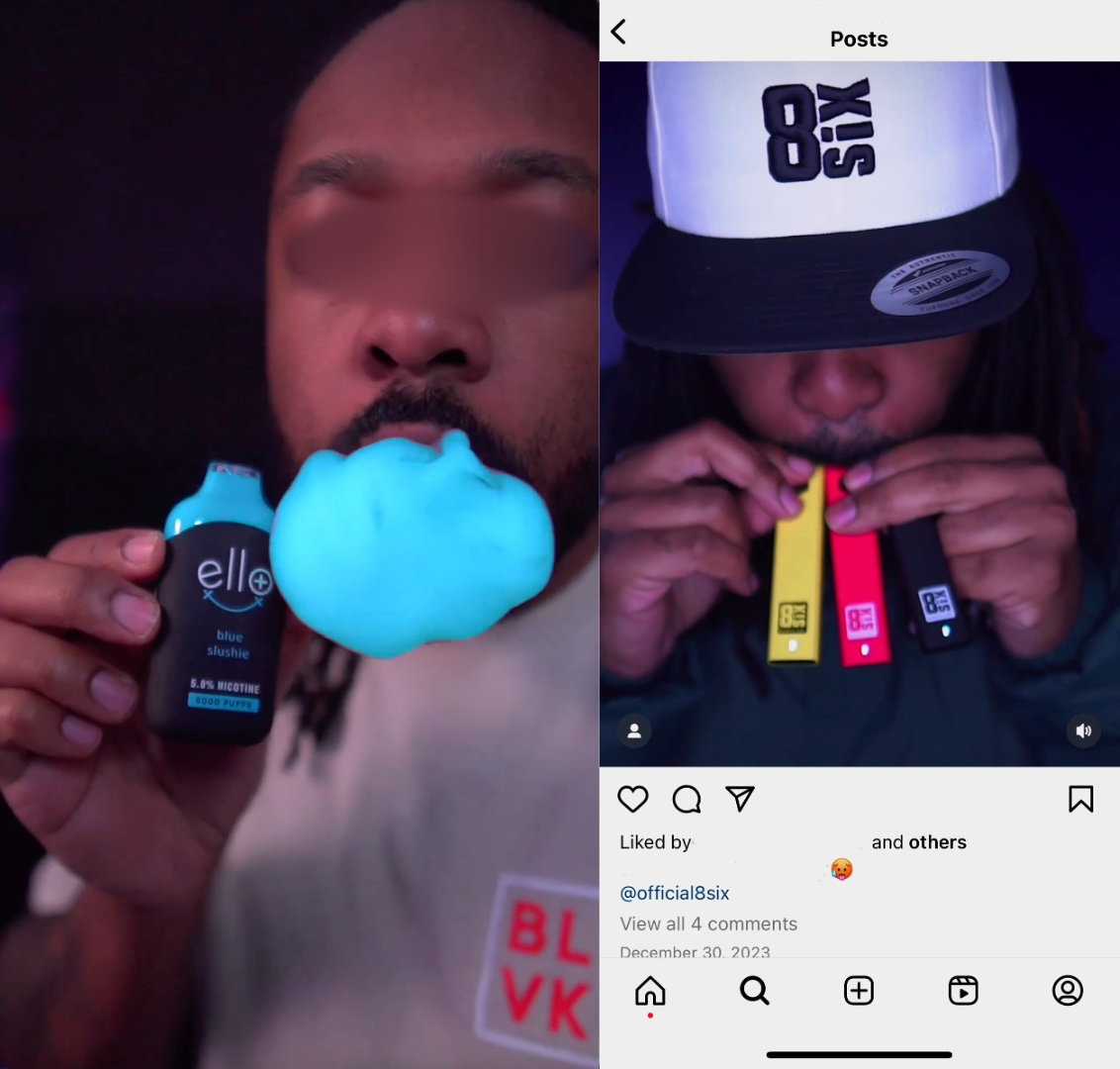Julia Vassey, Julia Chen-Sankey, Jennifer B. Unger
Cannabis and nicotine are two of the most commonly used substances among youth in the United States. In 2023, 11.4% of eighth graders and 23.2% of 12th graders (15-17-year-olds) vaped nicotine, while 6.5% of eighth graders and 19.6% of 12th graders vaped cannabis in the past year.
Some evidence suggests that adolescents who use e-cigarettes (vape nicotine) are at risk of progression to cannabis vaping or vice versa or to dual use of e-cigarettes and cannabis products. Those who use both e-cigarettes and cannabis can suffer from negative health effects of both substances. E-cigarette and cannabis use are harmful to adolescents’ brain development, can lead to addiction, and are linked to depression and other mental health problems.
Several of the world’s leading tobacco companies have shown interest in the cannabis business, have invested in cannabis companies, and have supported pro-cannabis groups that lobby for cannabis legalization. For example, Altria and British American Tobacco partially acquired cannabis research groups, and Phillip Morris International invested in a medical cannabis company. It is therefore not surprising that an increasing number of physical and online vape shops sell both nicotine and cannabis vape products. Marketing (e.g., on social media) of cannabis and e-cigarette products side by side has also emerged.
Influencers actively promote e-cigarettes on social media, but co-marketing of e-cigarette and cannabis products by influencers has rarely been reported. We found evidence that some micro-influencers (i.e., influencers with fewer than 100,000 followers) who promote e-cigarettes on social media also promote cannabis or hemp products (including CBD and psychoactive Delta-8 THC). For example, Figure 1 and Figure 2 feature micro-influencers who promote disposable nicotine e-cigarette devices next to cannabis disposable vape bars (Figure 1) or a Delta-8 flower product (Figure 2) on Instagram and TikTok. Studies show that youth may trust influencers more than direct advertising because influencers’ posts may seem more authentic and relatable. Promotion of cannabis and nicotine/tobacco products next to each other may confuse youth about which product (e-cigarette or cannabis) is being promoted in a post. That is because of the strong resemblance between disposable and cartridge-based nicotine vape products and cannabis vape products (Figure 1 and 2). Such marketing can glamorize vaping both substances, motivate youth to start using them, and see such behavior as normative. Moreover, the cannabis industry may adopt marketing strategies of the tobacco industry, e.g., the use of influencers in cannabis product promotion on social media. The lack of legislation (e.g., in the U.S.) related to cannabis marketing restrictions exacerbates the issue.

 Figure 2.Instagram posts from micro influencer, screen grabbed April 2024
Figure 2.Instagram posts from micro influencer, screen grabbed April 2024
Facebook, Instagram and TikTok prohibit influencers from promoting nicotine/tobacco products and selling or promoting cannabis, but the substances are promoted on these platforms in violation of community guidelines. Our findings show the need for further regulation of social media influencer marketing globally and greater research and policy attention to co-use and co-marketing of e-cigarette and cannabis products.
Julia Vassey, Ph.D., MPH, is Senior Research Scientist at the University of Southern California, Department of Population and Public Health Sciences in the USA. Julia Chen-Sankey, Ph.D.,M.P.P., is a social and behavioral public health scientist and an assistant professor in the Department of Health Behavior, Society, and Policy at the Rutgers School of Public Health in the USA. She is also a core faculty member of the Rutgers Institute for Nicotine and Tobacco Studies. Jennifer Unger, Ph.D. is Professor of Population and Public Health Sciences and Vice Chair for Faculty Development at the University of Southern California, USA.